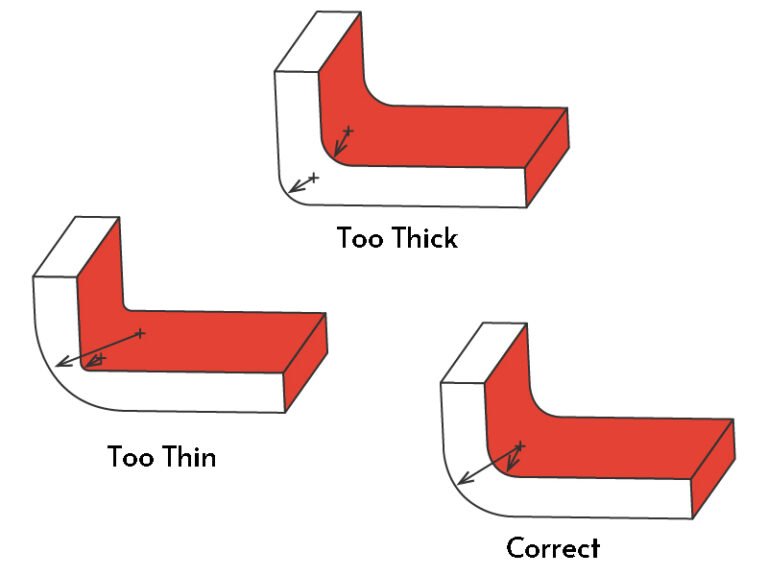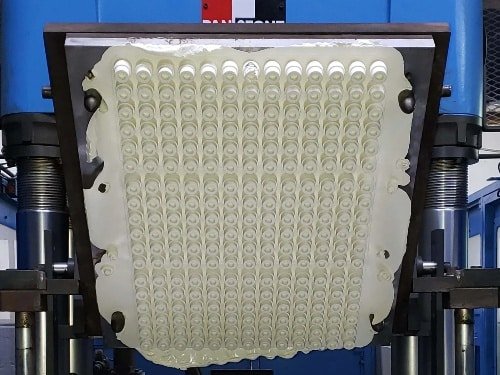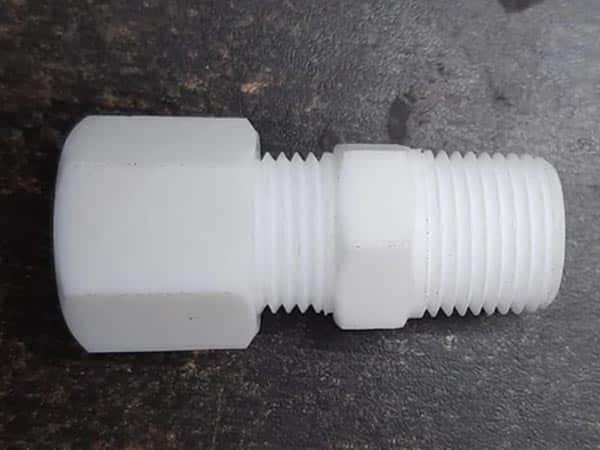Cold slugs are common defects in the injection molding process. What is a cold slug? How to prevent cold slug in injection molding? Read the article and get comprehensive information.
What Are Cold Slugs in Injection Molding?

A cold slug is a solidified piece of plastic that forms when molten material cools too early in the injection molding process, typically in the nozzle, runner system, or injection molding gate, before it reaches the mold cavity. This premature solidification creates small, undesirable lumps that can embed in the final part. Such defects compromise not only the aesthetic but also the mechanical properties, like strength and durability of the parts, leading to increased scrap rates and higher production costs.
How to Identify Cold Slugs in Parts?
Identifying cold slugs is a critical step in quality control during injection molding. The most common method is visual inspection. Key indicators include:
- Surface Irregularities: Look for small protrusions, flow marks, or uneven textures on the part surface, particularly near the gate or runner entry points.
- Blemishes or Streaks: Cold slugs often appear as discolored or streaky patches, indicating solidified material that didn’t blend properly with the molten plastic.
- Protrusions at Gates: Small, solid lumps near the gate are a strong indicator of cold slug formation.
Main Causes of Cold Slugs in Injection Molding
Several factors contribute to cold slug formation, primarily centered around temperature control, mold design, process parameters, and material characteristics.
Improper Temperature Control
Low nozzle or hot runner temperatures cause molten plastic to cool prematurely at the nozzle tip, solidifying before entering the mold cavity. Insufficient mold temperature leads to rapid cooling when the melt contacts the mold surface, forming slugs in the cavity or gate areas. Uneven barrel temperature distribution results in inconsistent melt flow and premature solidification inside runners.
Poor Mold Design
The mold’s geometry significantly influences melt flow and cooling rates. Inadequate gate location or size can hinder proper flow and promote solidification near the gate. Runner design flaws, such as overly long or narrow channels, increase flow resistance and encourage solidification within runners. Improper cooling system layout, causing uneven temperature distribution and localized cooling spots where cold slugs can form.
Injection Molding Process Parameters
Incorrectly set process parameters exacerbate cold slug risk. A slow injection speed allows the molten plastic to linger in the runner or nozzle, giving it time to cool and solidify into cold slugs. Insufficient injection pressure fails to push molten plastic fully into the cavity, leaving gaps or early solidified segments. Excessive cooling time further lowers mold and melt temperature, increasing slug formation.
Material Properties
Materials with high melting points or poor flow characteristics need more precise thermal and pressure controls during injection. Failing to adjust for material specifics results in higher cold slug formation rates.
Poor Equipment Maintenance
Accumulated residue or blockages in the nozzle or runner system can disrupt heat distribution, leading to localized cooling and cold slug formation.
How to Prevent Cold Slugs in Injection Molding?
Optimize Temperature Control
Maintain optimal nozzle and hot runner temperatures to keep the plastic adequately molten until it reaches the mold cavity. This can include insulation jackets or enhanced heating elements around the nozzle. Ensure uniform mold temperature by redesigning cooling channels for even flow distribution and controlled thermal gradients. Deploy multi-zone heating for barrels to minimize temperature fluctuations and avoid local cooling within the injection system.
Improve Mold Design
Select proper gate locations and sizes to enhance melt flow and reduce stagnation zones. Multi-point gates or hot runner systems can be valuable here. Design efficient runner systems with gradual tapering or helical shapes to reduce flow resistance and prevent early solidification. Incorporate dynamic or optimized cooling systems to maintain stable mold temperatures during the injection cycle.
Adjust Process Parameters
Increase injection speed and pressure sufficiently to avoid flow slowdowns and reduce the chance of premature cooling. Fine-tune cooling times to balance cycle times with necessary melt temperature control, avoiding excessive cooling.
Regular Equipment Maintenance
Routine cleaning and inspection of nozzles, runners, and barrels prevent blockages and ensure consistent heating.
Zhongde’s Solution to Cold Slug Defects
Cold slugs are a persistent challenge in the injection molding process. However, it can be prevented. Zhongde is an experienced manufacturer in addressing cold slug injection molding issues, leveraging custom injection molding services and rigorous quality control.
FAQ
Cold slugs are physical lumps, while flow marks are visual imperfections. A cold slug is a solidified plastic lump formed when molten plastic cools prematurely in the nozzle, runner, or gate, causing surface or structural defects. A flow mark is a wavy, streaky pattern on the part surface due to uneven flow or cooling during injection.
It is very difficult to eliminate formed cold slugs. However, with proper mold design, exact temperature control, optimal process parameters, and material selection, cold slug defects can be minimized significantly.
Materials with lower viscosity and higher flowability, like ABS or polycarbonate, reduce cold slug formation. Choosing resins with wider processing temperature ranges and good thermal stability also helps maintain molten flow, minimizing premature cooling.
Yes, cosmetic defects caused by cold slugs can often be improved with secondary processes such as polishing, sanding, or painting. However, these do not fix structural weaknesses or internal defects.
In injection molding, cold slugs form in the nozzle, runner, or gate due to premature cooling of molten plastic. Compression molding, which uses preheated material pressed into a mold, is less prone to cold slugs since there’s no runner system, but improper preheating can still cause similar solidification defects.



